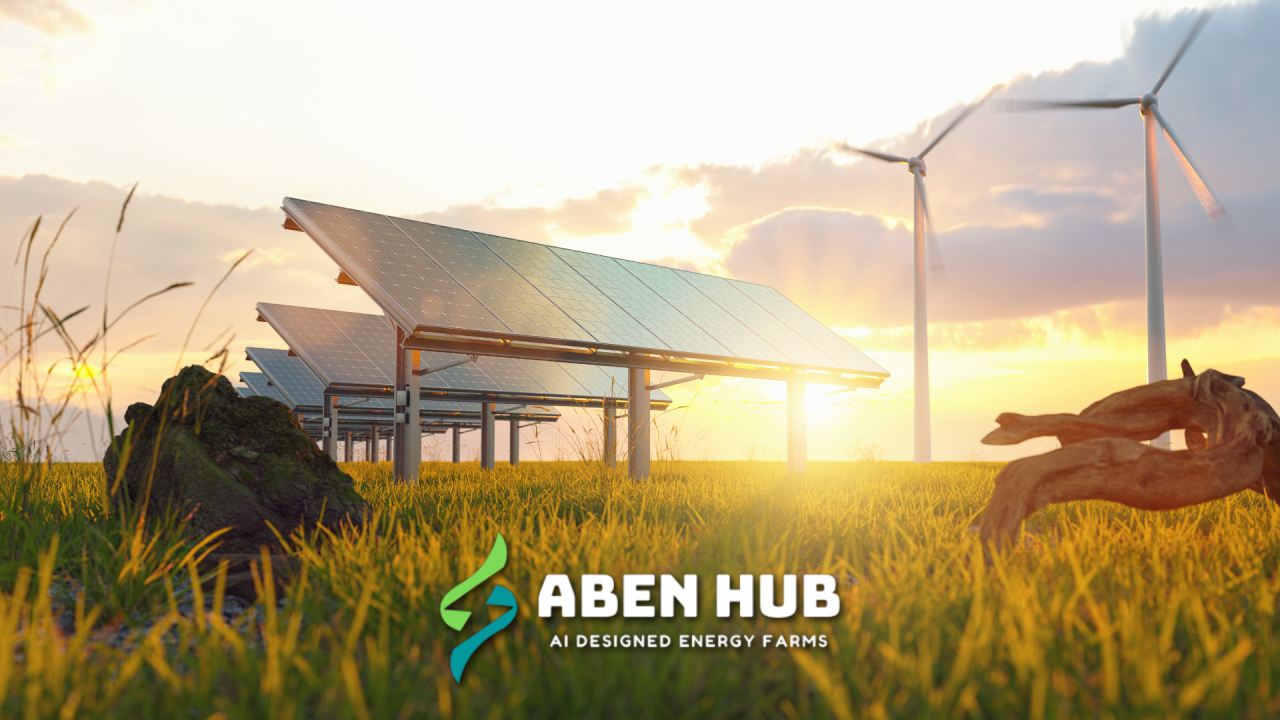As the global shift towards renewable energy accelerates to satisfy increasing power needs, utility-scale projects are becoming pivotal in shaping the energy sector’s future. Solar energy, in particular, has seen remarkable growth, as highlighted by the 2023 SEIA/Wood Mackenzie Solar Market Insight Report, which indicates that over 60% of US solar PV energy is generated by utility-scale projects. These projects, including solar and wind farms, offer substantial potential for supplying clean, sustainable energy on a large scale. Unlike smaller-scale initiatives, utility-scale projects benefit from economies of scale, leading to reduced costs per unit of energy produced. However, they encounter numerous challenges that can impede their successful implementation. This article explores some of the major obstacles faced by utility-scale renewable energy projects and examines the innovative solutions offered by ABEN HUB to address these challenges.
1. Site Selection
Utility-scale renewable energy projects often require large land areas, posing a significant challenge in selecting suitable locations that optimize energy production while minimizing environmental impact. There are a number of technical factors that influence this energy potential. For example, in the case of solar PV systems, optimizing parameters such as tilt angle and shading can significantly increase the potential energy that can be generated. Interviews with design engineers that have worked on such projects reveal that collating data from multiple sources and adjusting for these factors can be time consuming.
ABEN HUB’s Solution: By leveraging our machine learning models and databases, ABEN HUB is able to streamline data integration for users. Our optimization-driven computational models efficiently tweak technical parameters to maximize energy production while minimizing environmental footprint through terrain and energy resource analysis.
2. Land Use
Since utility-scale projects require extensive land areas, the cost of land becomes a significant component of the overall project expenses. Therefore, it becomes crucial to maximize the utilization of the available land to reduce costs. Our analysis of industrial projects revealed that certain ventures utilized only 30% of the available land, indicating potential underutilization. While reasons for this underutilization vary and will be discussed further in the ‘Regulatory & Permitting’ section, it underscores the importance of efficient land usage.
ABEN HUB’s Solution: By harnessing AI through our design platform, ABEN HUB optimizes the layout of solar panels and/or wind turbines on specific sites, thus maximizing the utilization of land resources. The platform is designed to consider various factors, including pathways on-site and equipment requirements, to always ensure the most efficient land usage.

3. Regulatory and Permits
Navigating through regulatory frameworks and securing necessary permits presents a considerable challenge in the renewable energy industry. The permitting process varies in complexity and jurisdiction, ranging from federal to township levels. This necessitates engagement with diverse organizations to obtain permits. Additionally, thorough checks must be conducted, including detailed land analysis to assess soil types, water bodies, potential impacts on wildlife migratory paths, and heritage site considerations. The lack of streamlined processes often leads to project delays. In an interview, a permitting staff member revealed how challenging it becomes for renewable energy developers to carry out a project in a new jurisdiction as they try to identify the key members and navigate through unfamiliar systems.
ABEN HUB’s solution: We are actively developing guidance and support mechanisms to streamline the navigation of regulatory hurdles, expedite project timelines, and ensure compliance. Furthermore, we are exploring avenues to simplify how project managers can navigate through this complicated process.
4. Grid Integration
Integrating utility-scale renewable energy projects into existing electrical grids is a complex task, requiring upgrades to transmission and distribution infrastructure to ensure efficient delivery of electricity to consumers. Cost of any upgrades need to be factored in projects costs and can be significant enough to ‘make or break’ a potential project deal. In an interview, an industry expert revealed how challenging it can be as this analysis needs to be done prior to the project and such a study can be quite expensive. Therefore, if the feasibility report depicts a project is infeasible, the developers have already incurred a cost without realizing any benefit.
ABEN HUB’s Solution: While we are working to better incorporate and understand this multi-faceted process, ABEN HUB can provide solutions from a design perspective. Our platform offers tailored configurations that enhance grid integration efficiency. By leveraging advanced modeling techniques, we minimize transmission losses and ensure grid stability, laying a foundation for successful project implementation.
5. Intermittency and Variability
Renewable energy sources such as solar and wind are known for their intermittency, presenting challenges to grid stability and reliability. Accurate weather forecasting can play a key role in predicting energy generation levels and optimizing utilization. Additionally, implementing storage solutions or backup generation is essential to guarantee a continuous power supply.
ABEN HUB’s Solution: Our platform generates profiles that optimize energy storage technology utilization, ensuring efficient storage and usage. Leveraging advanced tools, we analyze energy demand patterns and resource availability to optimize storage solutions effectively within our platform.
6. Technology Selection and Efficiency
Choosing the appropriate technology and optimizing its efficiency are vital factors in the success of renewable energy projects. Many developers often stick to a specific technology either because it’s an industry standard or due to its ease of acquisition. However, such technological choices may not always be the most economically or environmentally sound options.
ABEN HUB’s Solution: Our platform tries to stay at the forefront of technological advancements, offering access to cutting-edge technologies and best practices. ABEN HUB’s comprehensive database and advanced tools tailor solutions utilizing the most effective technology for each project, thereby ensuring optimal performance.
7. Market and Competition
Utility-scale renewable energy projects face competition from conventional energy sources, affecting their competitiveness. While conventional energy sources enjoy the existent vertical integration within the energy infrastructure, renewable energy has demonstrated its effectiveness within this environment. Nonetheless, it’s essential to thoroughly examine demand in a holistic manner, considering all available options.
ABEN HUB’s Solution: Our comprehensive analysis considers economic and environmental impacts, providing insights for decision-making compared to alternative technologies.

8. Financial Viability and Cost Management
Ensuring a balance between upfront investment and future returns is paramount for any large-scale project. Assessing financial feasibility and refining cost management approaches through detailed analysis of project economics and integration of financial incentives is what dictates the survivability of a project.
ABEN HUB’s Solution: Our platform helps developers maximize ROI and minimize risks by analyzing project economics and incorporating financial incentives. ABEN HUB assists in evaluating financial viability by conducting comprehensive analyses of project economics and integrating financial incentives.
9. Community and Stakeholder Engagement
Engaging with local communities and stakeholders is crucial for project success. Clear and open lines of communication must be maintained at all times. Local communities and stakeholders need to be fully informed about the benefits of the project, and their concerns must be actively addressed to cultivate positive relationships.
ABEN HUB’s Solution: Our platform is actively integrating tools designed to effectively communicate project benefits and address concerns. This initiative aims to foster positive relationships with local communities and stakeholders, contributing to the overall success of projects.
In conclusion, utility-scale renewable energy projects encounter various challenges that can hinder their success. ABEN HUB’s innovative AI-driven solutions can allow developers to overcome these obstacles and fully utilize renewable energy resources. While we’ve focused on key challenges here, a comprehensive discussion of all aspects was not feasible within this article. Nevertheless, we’ve identified the main issues and established that by leveraging advanced technology and industry expertise, ABEN HUB is ready to empower developers in leading the transition towards a clean, sustainable energy future.





